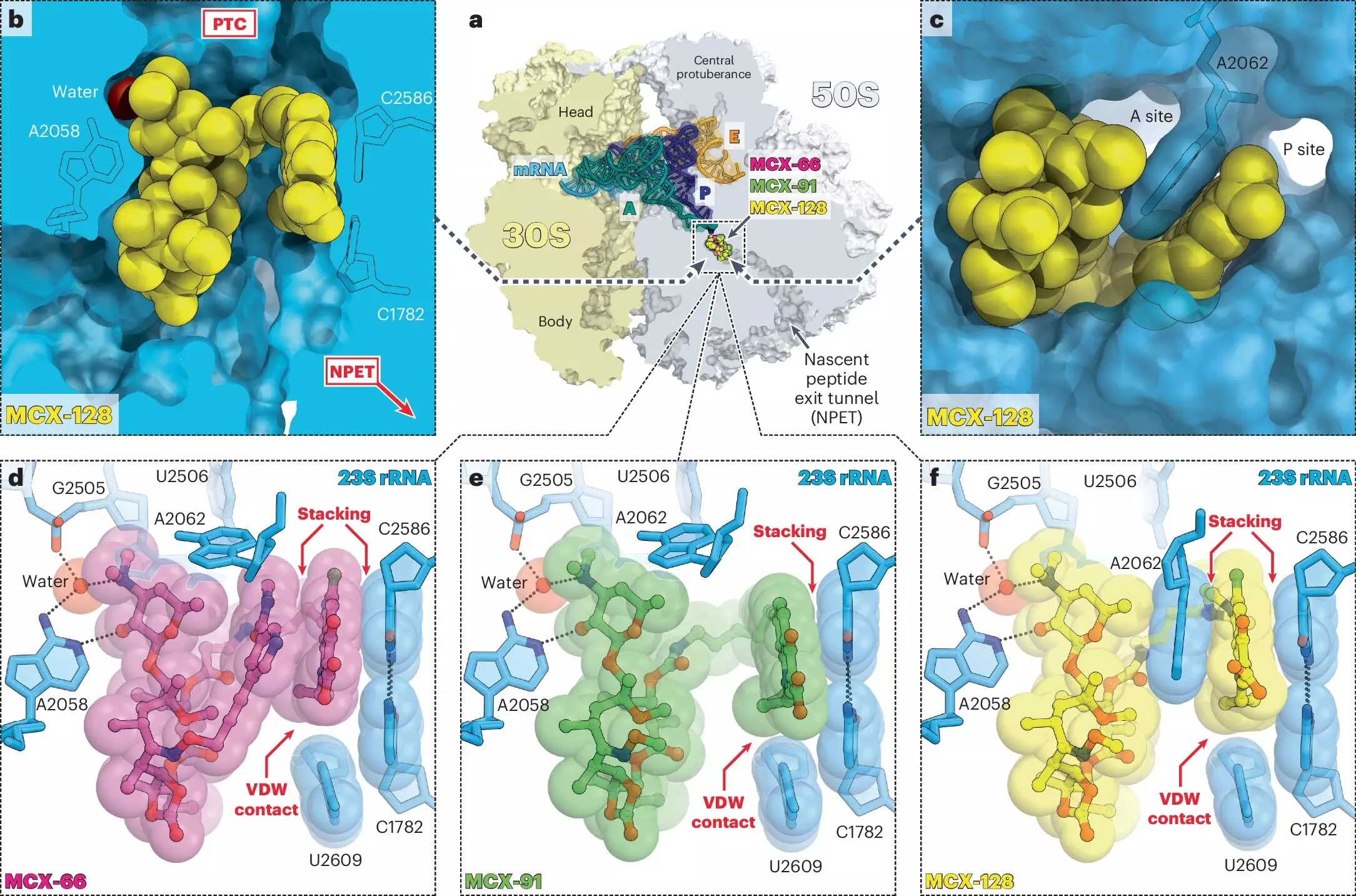Antibiotic resistance is one of the most pressing health concerns of our time. With bacteria evolving faster than our ability to combat them, the need for innovative solutions has never been greater. Enter new research from the University of Illinois Chicago (UIC), which reveals a groundbreaking class of antibiotics known as macrolones. This pioneering approach aims to tackle bacterial infections by simultaneously targeting two crucial cellular functions. The implications for public health could be transformative, as this dual-action strategy may significantly thwart any attempts by bacteria to develop resistance.
Understanding Macrolones: A Dual Mechanism of Action
At the heart of this research lies a unique formulation of synthetic drugs that embodies the strengths of two well-established antibiotic classes: macrolides and fluoroquinolones. Macrolides, such as erythromycin, are known for interfering with the ribosomes, while fluoroquinolones, like ciprofloxacin, inhibit a bacteria-specific enzyme called DNA gyrase. By synthesizing a compound that disrupts both functions, macrolones potentially complicate bacterial evolution. This disruptiveness is not merely a matter of degree; according to the researchers, it would require bacteria to develop two simultaneous defenses, making resistance nearly quixotic.
Dr. Alexander Mankin, a distinguished professor at UIC, highlighted the uniqueness of this approach, stating, “If the antibiotic hits both targets at the same concentration, then the bacteria lose their ability to become resistant via acquisition of random mutations in either of the two targets.” This simultaneous disruption is a game-changer in the armory against antibiotic resistance, providing a robust shield against future bacterial adaptations.
The Collaborative Research Effort
Another dimension of this breakthrough lies in its interdisciplinary research approach. The UIC study reflects a dynamic collaborative environment within its Molecular Biology Research Building, where various academic disciplines converge to drive scientific discovery. Experts from medicine, pharmacy, and biological sciences merged their knowledge to examine the cellular activities of macrolones extensively. Yury Polikanov, an associate professor specializing in structural biology, led a segment of the investigation focused on how these new antibiotics interact with ribosomes. Intriguingly, the macrolones were shown to bind more tightly than traditional macrolides, even obstructing the activity of ribosomes in bacteria that had previously developed resistance.
The convergence of expertise within this research group not only accelerates scientific progress but also creates a myriad of potential applications that can be pursued, from antibiotic design to understanding the fundamental mechanisms of drug action. Such teamwork is essential as we navigate the complexities of bacterial resistance.
Promising Results and Future Directions
While many of the macrolone derivatives displayed varying levels of efficacy in inhibiting the ribosome and DNA gyrase, one particular formulation has emerged as a frontrunner. By compellingly disrupting both targets at the lowest effective dose, this candidate epitomizes the innovative approach that is needed to tackle one of the most alarming challenges in modern medicine.
The researchers at UIC suggest that this study could serve as a vital stepping stone in how chemists and biologists conceptualize antibiotic development. The observation that optimizing macrolones for dual action can hinder bacterial resistance opens up an exciting route for future research. The impact of this work may extend far beyond UIC’s laboratories. It can redefine strategies and enhance our ability to confront and conquer infection-causing pathogens effectively.
Anticipating the Ripple Effect on Global Health
As the fight against antibiotic resistance intensifies, the world stands at a crucial juncture where innovative approaches like macrolones could dictate the future of infectious disease management. The global health community should take note and support further investigations into these dual-target antibiotics. While we celebrate this scientific leap, we must also remain vigilant, acknowledging that the battle against resistant bacteria is ongoing. The success of such research could very well signal a reclamation of our power over increasingly stubborn bacterial foes.
The findings from UIC illuminate a path forward, instilling a newfound sense of optimism amidst rising dire warnings regarding antibiotic resistance.

